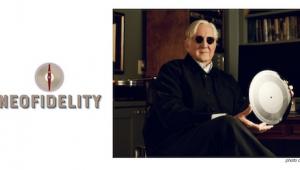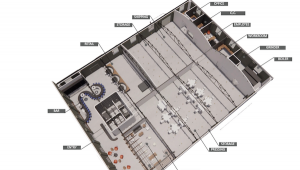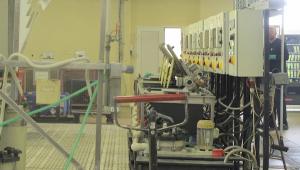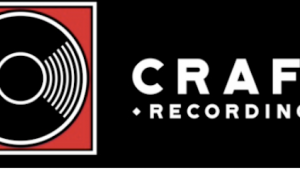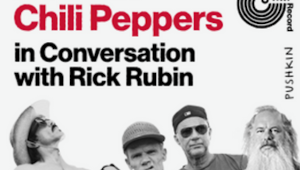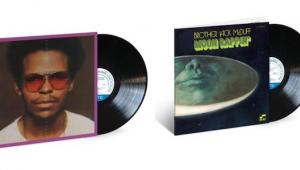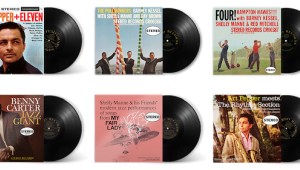He captured many historical moments with his music. I am familiar with his 7th symphony which is about Leningrad, more particularly about the war and siege of the city. He actually wrote it on a roof top while hearing the coming battle! Shostakovich had an ability to capture what was happening in his music. I have a friend in Russia who knows a ton about Shostakovich and he is his favorite composer. I learned a lot from him. I have Shostakovich's 7th on vinyl on Parliament Records in Mono. Not the best recording/pressing, but ok.
Electric Recording Company Tackling Previn/LSO's Epic Shostakovich Symphony No. 13-"Babi Yar"

Recorded July, 5th and 6th, 1979 at famed Kingsway Hall, and originally released on EMI (ASD 3911), the 2 LP set will be limited to 150 copies. This is a sonic spectacular and of course a moving work commemorating a Jewish massacre committed by the Nazis during WW II. The symphony's five movements are titled: "Babi Yar", "Humour" (meant ironically), "In the Store", "Fears" and "A Career".
This is ERC's first reissue sourced from a Dolby A master tape. ERC purchased all variations of Dolby A decoding boxes and heard significant differences among them. They chose the best sounding ones, replaced some components and manufactured special silver cable runs to go from the Dolby Decoder to the Lyrec console.
The image at the top is my Alto-Analogue double LP reissue from the 1990s also cut from tape. It's a sonic and musical spectacular that in ERC's hands should produce something over-the-top great.
ERC assured me there will be no mono fold-down edition.
- Log in or register to post comments


Obviously a some real fans of this record out there......

Oregon's recordings from this era are some of the best. In particular his Midsummer Night's Dream. Not surprised this sold out.

The Alto-Analogue pressing Michael posted the cover of was cut on 2 LPs, 3 sides. This ERC pressing is contained on 1 LP just as the original pressing was. At least the back cover they posted on their website would suggest as such.

seems to indicate otherwise:
"Recorded July, 5th and 6th, 1979 at famed Kingsway Hall, and originally released on EMI (ASD 3911), the 2 LP set will be limited to 150 copies."

https://electricrecordingco.com/shop/symphony-no-13-babi-yar-
The back of the jacket clearly states side 1 and side 2 and those two sides contain all 5 movements. But perhaps they are reproducing the jacket as original but splitting it over 2 LPs?

As a reel-to-reel collector I know the merits of Dolby A. En- and decoder put so many parts of electronic components in the signal way that it is nearly impossible to get absolut convincing results. There is always the feeling that it might sound better with another decoder. After lot of tryouts I settled with a Dolby A 363 No 300 SR. I removed the input and output transformers. They should be a good thing, but the proof is in the pudding and it sounds much much clearer without the transformers. Next I bridged all unnecessary electronic circuits. All dolby A decoders suffer from a lot of control and fine tuning switches. It is nearly impossible to overhaul an unit, because they are so complex. Anyway, from dubious sources I got a Barbara Streisand half inch full speed "master" tape Dolby A of the music score to Yentl. It is something like a religious experience to listen to it when Dolby A is properly decoded. Still, I would wish they had not used Dolby in the first place. Because, I get the same audiophile Nirvana with non-Dolby tapes without all the trouble. In fact I have no idea, why Dolby got such a power in the tape industry. Many of my best sounding tapes are from the fifties with just IEC or NAB equalization...

I have been working with a relatively well known recording restoration expert on developing a piece of software that JUST HAPPENS to do an excellent job of decoding DolbyA material. It isn't technically legal to call it a 'DolbyA decoder', but it does decode tapes in DolbyA form, and does it very accurately. The DolbyA HW worked really well for ENCODING, but the decoding process had built-in errors, which caused among other problems 'DolbyA fog' which is a layer of modulation distortion onto the resultant signal. We have all lived with that until either doing a simple 'filter' conversion, which is done commonly now (the filter just converts the DolbyA signal into a multi-band compressed signal), and then there is a piece of software called DHNRDS. Currently, there is only the DA version of the software, and it does the decoding in a much more precise way than the HW could do. It even has both IMD work arounds, and modulation distortion scrubbing -- with similar ideas, but more advanced design than the Orban patent.
The bad news is that the DHNRDS is both simpler to use and more tricky to use than a real DolbyA. if you are set-up for a DolbyA in your HW config, then a DolbyA is easier to use. If you have digital files that have been ripped from tape, then the DHNRDS is likely easier to use, with more clean results. The DHNRDS can do all of the old A301 tricks (disabling compressors, like sometimes done by MFSL disabling HF1/9k-20k channel), and can use the calibration tone level to set the reference directly. I don't sell the software myself, but will give out free license with timeout for consumers (consumers are NOT the market. Big archives/libraries seem to be more interested so far.)
DHNRDS is NOT a play-toy, and actually cleanly decodes, with actual NR (it seems to produce a more silent result than a DolbyA), and matches ALL of the subtle timing of the DolbyA compression. It also sounds like a DolbyA -- modulo a little more clean, cymbals are better reproduced, vocal chorus are more clean, etc. Even though it generally sounds more clean/brighter, it is actually about -0.75dB down between 10kHz -> 20kHz, and goes up to 40kHz.
Just FYI -- this project was done mostly as a way to extract the last bits of quality from all of the old recordings. I think that most people who have a copy have the trial license -- this was NEVER intended to be money making, but is a gift to the community. The DHNRDS also can sometimes undo the damage done to CDs as distributed.
John

yeah, there are some software solutions for decoding. But I am a hardcore analogist. Already, I get a bad stomach, when I have to put some transistors instead of tubes in the signal way. I play tape, because it is the second best quality analog source and would not want to spoil it with a digital processng step between analog source and analog speaker-output.

Okay -- I understand... But, if someone really needs a *clean* decode with the modulation products removed -- normal FET compressors/expanders or even THATcorp stuff will produce modulation products when compressing OR expanding, then the only way to really mitigate them are software, or exceedingly complex HW. (Decoding NR compressed signals does NOT normally undo the distortions, but can make them much worse.)
Sometimes there are no optimal analog HW solutions, where stuff like Dolby, TelcomC4 and DBX put you in a "box", where you (the person with a copy) has a decision pre-ordained - gotta be processed further. This is why I worked on my project -- not because I like NR systems, but I despise what they do to the signal, even though the tradeoff is very understandable.
I respect your feeling about digital -- it has had a bad name since the dynamic range compressed CDs (practically EVERY pop CD) came out. (The DRC isn't extremely visible because it doesn't attack the peaks as strongly as the lower levels and compresses the lower levels, also upsetting the freq response balance in strange ways.)
Most important, good luck and enjoy.
John

What everyone was thinking after reading the Forever Changes article. Thanks Michael on behalf of all of us.

even if last night was pretty memorable... not





